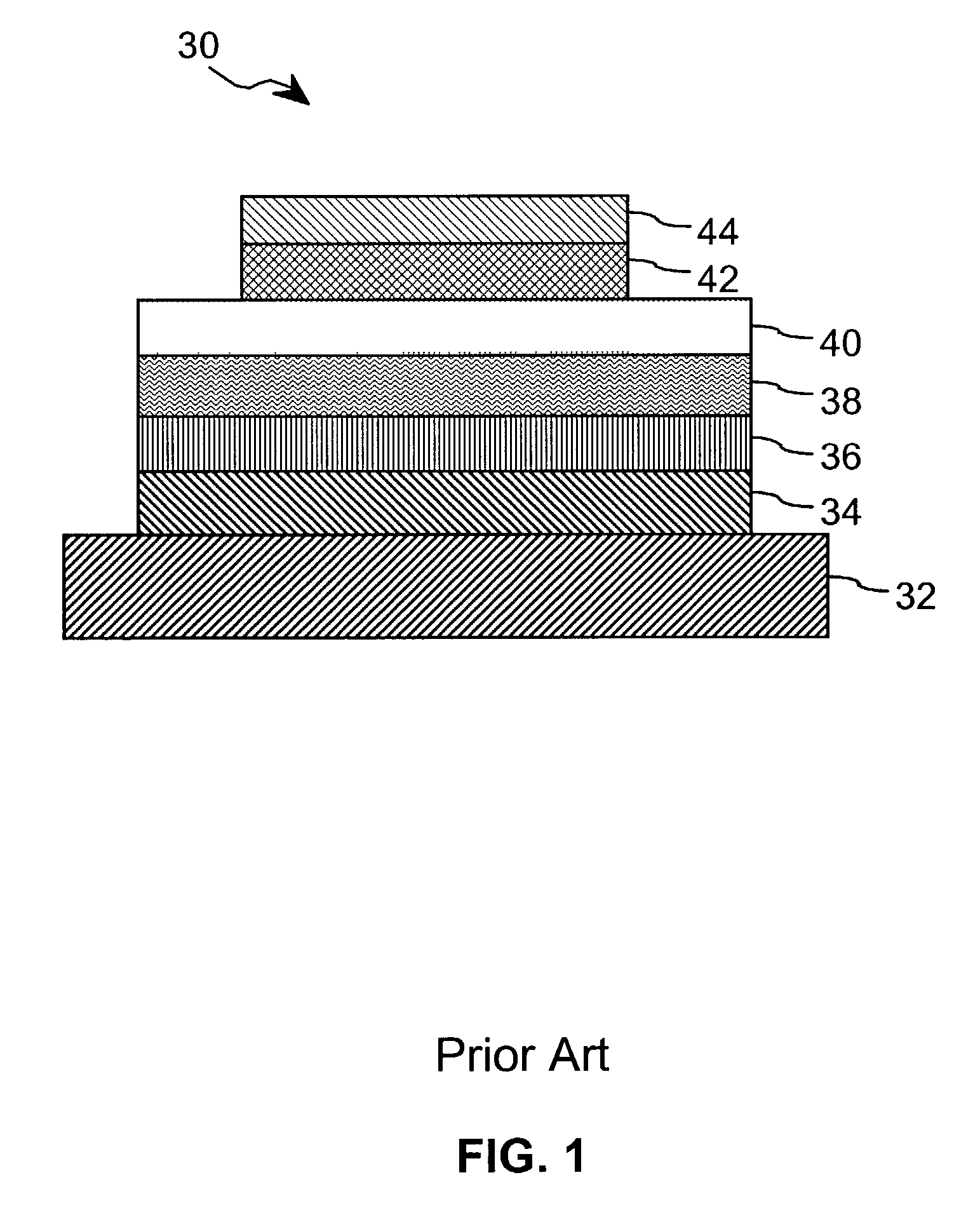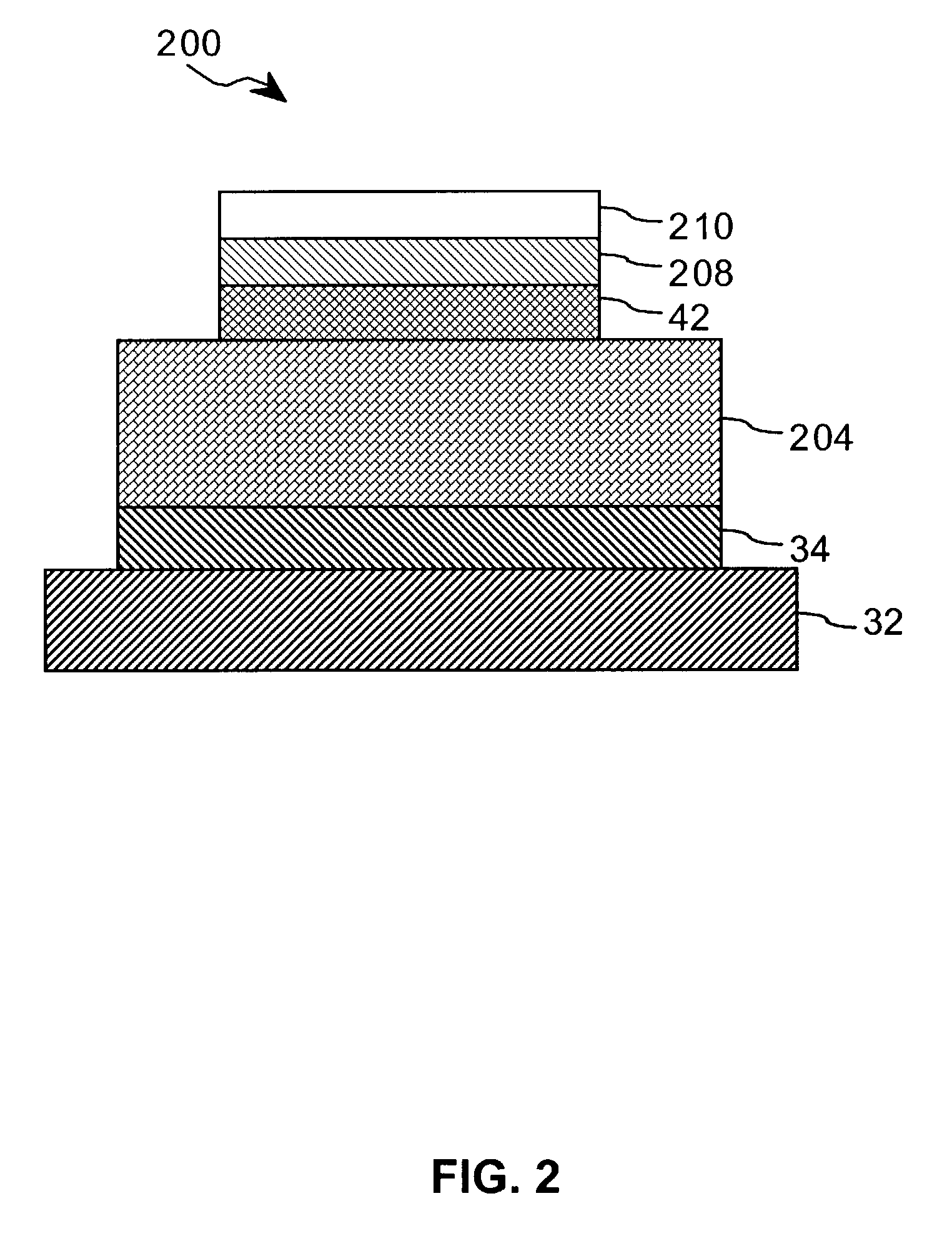Low temperature process for passivation applications
a low temperature process and application technology, applied in the manufacture of cold cathode, electric discharge tube/lamp, electrolyte system, etc., can solve the problems of unsatisfactory encapsulation technique and unsatisfactory three-layer protective covering described by haskal et al., and achieve improved encapsulation properties, low etching rate, good adhesion properties
- Summary
- Abstract
- Description
- Claims
- Application Information
AI Technical Summary
Benefits of technology
Problems solved by technology
Method used
Image
Examples
Embodiment Construction
[0025]The present invention provides methods for encapsulating electroluminescent devices in order to protect them from elements like moisture. Further, the present invention provides methods for improving adhesion to the cathode layer of electroluminescent devices. In particular, the cathode layer is subjected to an H2 plasma for a period of time prior to deposition of materials onto the cathode layer in order to complete the electroluminescent device. Representative electroluminescent devices include organic light-emitting diodes (OLEDs) and polymer light-emitting diodes. Typically, the electroluminescent device is used in devices such as car radios, mobile phones, digital cameras, camcorders, and personal digital assistants.
[0026]A typical electroluminescent device (e.g., OLED) in accordance with the present invention is illustrated in FIG. 2. The electroluminescent device 200 comprises a substrate 32, an anode 34 on substrate 32, an organic layer 204, a cathode layer 42 on organ...
PUM
 Login to View More
Login to View More Abstract
Description
Claims
Application Information
 Login to View More
Login to View More - R&D
- Intellectual Property
- Life Sciences
- Materials
- Tech Scout
- Unparalleled Data Quality
- Higher Quality Content
- 60% Fewer Hallucinations
Browse by: Latest US Patents, China's latest patents, Technical Efficacy Thesaurus, Application Domain, Technology Topic, Popular Technical Reports.
© 2025 PatSnap. All rights reserved.Legal|Privacy policy|Modern Slavery Act Transparency Statement|Sitemap|About US| Contact US: help@patsnap.com



